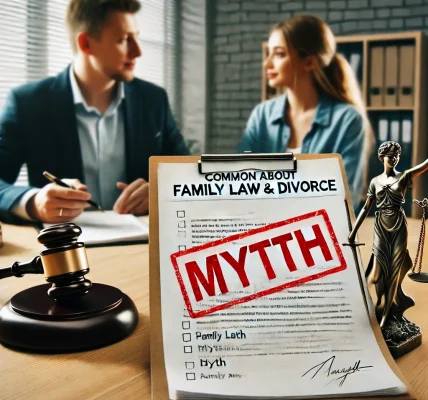Introduction
Adoption is a life-changing decision that brings joy to families and provides children with a loving and secure home. However, the legal process of adoption can be complex and involves multiple steps to ensure the child’s well-being and the rights of all parties involved. Understanding these steps is crucial for prospective adoptive parents to navigate the system smoothly and legally.
This guide provides a step-by-step breakdown of the legal process of adoption while ensuring compliance with laws, making it easier for families to welcome a new member with confidence.
Step 1: Decide on the Type of Adoption
There are different types of adoptions, and choosing the right one is the first step. The main types of adoption include:
- Domestic Adoption – Adopting a child within the same country.
- International Adoption – Adopting a child from another country, requiring compliance with international laws.
- Foster Care Adoption – Adopting a child from the foster care system.
- Stepparent Adoption – When a stepparent adopts their spouse’s biological child.
- Relative/Kinship Adoption – Adoption by a family member, such as grandparents or siblings.
Each type has unique legal requirements, so consulting an adoption attorney can help you understand the best option for your family.
Step 2: Choose an Adoption Agency or Attorney
Adoptive parents can either go through:
- An Adoption Agency: Licensed agencies facilitate the process by screening adoptive parents and matching them with children.
- An Adoption Attorney: A lawyer specializing in family law can help navigate the legal procedures, especially in private adoptions.
It is essential to choose a reputable agency or attorney who adheres to legal and ethical adoption practices.
Step 3: Complete a Home Study
A home study is a critical legal requirement in most adoptions. It evaluates the suitability of prospective parents to adopt a child. The process includes:
- Background checks (criminal and financial)
- Home visits by a social worker
- Interviews with family members
- Review of financial stability
- Medical evaluations
The goal of a home study is to ensure the child will be placed in a safe and supportive environment.
Step 4: Search for an Adoption Match
Once approved, prospective parents can begin the matching process:
- In agency adoptions, the agency helps find a child that matches the adoptive parents’ preferences.
- In private adoptions, the biological parents and adoptive parents connect directly.
- In foster care adoptions, the child is usually already under the state’s care.
It is important to be patient, as the timeline varies depending on state laws, birth parents’ decisions, and child availability.
Step 5: Legal Consent and Termination of Parental Rights
Before an adoption is finalized, the biological parents’ rights must be legally terminated. This can happen through:
- Voluntary termination – When birth parents willingly give up their parental rights.
- Involuntary termination – When a court decides that the biological parents are unfit due to neglect, abuse, or abandonment.
Each state has different waiting periods and revocation laws that allow birth parents to reconsider their decision within a set timeframe.
Step 6: File the Adoption Petition
Once the adoption match is finalized and parental rights are terminated, the adoptive parents must file an adoption petition in family court. The petition typically includes:
- Home study report
- Consent forms from birth parents (if applicable)
- Background checks
- Financial records
The court will review these documents to ensure all legal requirements are met.
Step 7: Attend the Adoption Court Hearing
A judge will schedule an adoption hearing to review the case. During the hearing:
- The judge may ask questions to confirm the adoptive parents’ suitability.
- The birth parents (if involved) may be asked to confirm their consent.
- The judge will ensure the adoption is in the child’s best interests.
Once the judge approves, they issue an adoption decree, granting full parental rights to the adoptive parents.
Step 8: Obtain a New Birth Certificate and Legal Documents
After the adoption is finalized, the child’s legal records are updated, including:
- A new birth certificate listing the adoptive parents as legal guardians.
- Updated Social Security records.
- Any necessary immigration documentation (for international adoptions).
These documents legally recognize the child as part of the new family.
Step 9: Post-Adoption Requirements
Some adoptions require post-adoption follow-ups, which may include:
- Post-placement visits by a social worker (common in agency and international adoptions).
- Finalization reports for international adoptions.
- Counseling services to help the child adjust to their new home.
It is also crucial for parents to create a nurturing environment to support the child’s emotional and psychological well-being.
Legal Considerations to Avoid Issues
To ensure a smooth and legally sound adoption process, adoptive parents should:
- Work with licensed professionals – Always verify that agencies and attorneys are accredited.
- Follow all state and federal laws – Each state has specific adoption requirements, so understanding the legal framework is essential.
- Keep records of all adoption-related documents – This includes agreements, court orders, and birth certificates.
- Be aware of revocation laws – Birth parents may have a set period to change their decision, depending on state law.
Conclusion
Adoption is a beautiful journey that provides children with stable, loving families while fulfilling the dreams of adoptive parents. However, navigating the legal process can be complex and requires careful planning.
By following the steps outlined in this guide and working with trusted legal professionals, families can ensure a smooth, legally compliant adoption experience.
If you’re considering adoption, consult a family law attorney or adoption agency to understand the specific legal requirements in your state and start your journey toward building a loving home.




